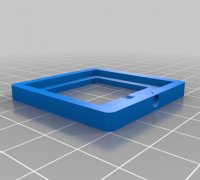I've dug up my Arduino, installed the IDE and HX711 library and successfully have it working on my Linux (Ubuntu) machine. The major remaining step is making the hardware (basically a platform with 4 blocks in the corners to which I can mount the load cells). After that, soldering the leads according to the wiring diagram to the HX711 and Arduino is trivial.
I'm going to use a 3x3 or 4x4 foot board, and use 4 blocks for the feet made out of a 2"x4" cut into 4" lengths (so they would be approx. 4x4x2 each). I would mount them with the 4x4 flat to the board so they will stick out about 2", so my platform is scale is raised about that much off the ground. I would mount each foot to each corner of the board. That's fairly easy. What will take me a bit of precise work would be using that Dremel routing kit which I ordered to make 2 sunken squares into each foot. One larger square I can press-fit the load cell into fully, and then a smaller square sunken even further (in the middle of the larger square) that allows the flexible part of the load cell to move in a bit more to measure strain.
Basically something like the photos below cut into the surface of my wooden foot block, although it would be much thicker therefore it wouldn't cut deep enough to make a hole through the middle like this:

This is an example of the first layer, made just slightly smaller than the load cell, so I can "press fit" it in. What you see missing in this photo below is that another smaller square in the middle would have to be cut out a bit deeper to allow the flexible part of the load cell to have room to flex a bit:

This will be my first time using a Dremel router kit so will be a bit of a learning curve. Thankfully I have lots of scrap wood to practice on. I don't think I'll be using any "guides", it will be just eyeballing and following an outline I draw very slowly. I can chisel the edges flatter later if needed, and if I press fit the load cell that will also flatten out the edges so it doesn't have to be perfect. It may even help if there are irregularities as that will help retain the load cell when I compress the wood as I push it in.